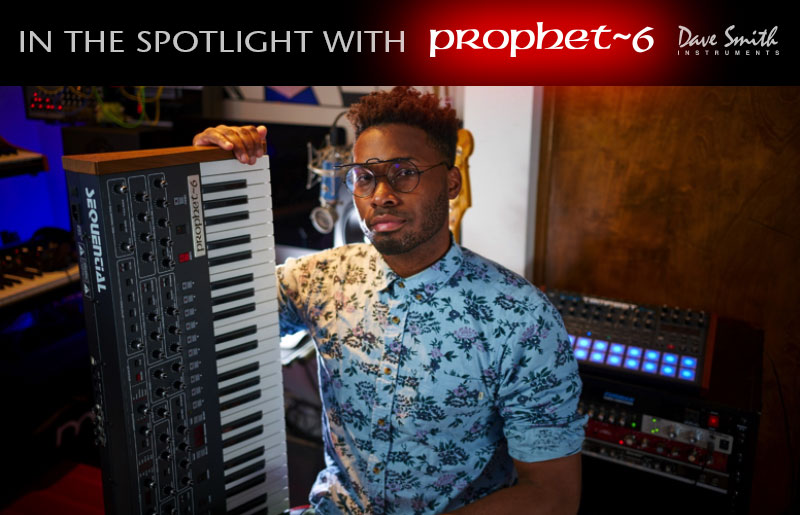
Noir Et Blanc Vie (Stephen Fitzgerald) is a Keyboardist, Producer and Videographer from Los Angeles California. Not only accomplished in the world of music, but video as well, he runs the successful channel of the same name. He produced his first record for the band Orangeburg Masscre at just 18 years old. After attending Berklee College of Music, he moved from Boston to Los Angeles to assist at the legendary Track Record studios in North Hollywood — working with artists such as RZA and David Banner, and contributing for songs for Allen Stone. He toured with his own group, Godsons, and most recently produced tracks on The Self Help Book from the artist Kwesy Mojo. He has also created content for Synth with Pedalboards and The Beginners Guide to Eurorack. Noir Et Blanc Vie is a passionate keyboardist who believes it’s never too late to find a love for learning music.
We chatted with him about how he’s using the Prophet-6 and Tempest.
What made you choose the Prophet-6 and the Tempest?
“I’ve owned many synths in my career, and even a half dozen Dave Smith Instruments, but the Prophet-6 and Tempest have remained as my go-to tools for the last 3 years. I’ve come to expect nothing but the best build quality, reliability, and continued support when it comes to DSI synths. Whether at a live gig, at the studio, or composing, I know I can trust my DSI synth to always be more than enough to handle any task.”
How are you using them?
“In the studio producing, I use the Tempest as the master clock for my DAW. I’ve become really good at sequencing on it. Plus, switching between beats on the fly is incredibly intuitive. Drums courtesy of the Tempest appear in almost every track I compose. When it comes to my Prophet-6 nothing stands in its way on a song; it effortlessly cuts through a mix, while at the same time being my go-to polysynth for the road. It’s not light by any means, but it’s worth it for the tuning stability and six voices.“
What are some of your favorite things about the two instruments?
“Simplicity is the Prophet-6’s middle name. On the surface I thought it might be lacking some of the things I’d grown to expect from DSI synths — incredibly deep menus, a huge mod matrix… boy was I wrong. The effects section on the Prophet-6 makes it all worth it, and the ability to not have to menu-dive for everything you want is just unheard of in most synths of this complexity. The Tempest is a synth that does it all, it’s not a drum machine, it’s a polysynth, it’s a groove box, it’s a controller for another synth, it’s honestly the most fully featured analog hybrid synth ever created.“
What does the Prophet-6 give you that other instruments don’t?
“I’m sure I’m not the first to say it, but the Prophet-6 gives you a sound that no other analogue synth can touch. The warmth and weight of its tone is surreal. Many synths work on the premise of being so deep that you often lose yourself in the menus. The Prophet-6 is knob per function, and for someone who hates staring at computer screens, this is a really a tool I can use without losing inspiration.”
Any interesting tricks or techniques you’d like to share?
“Never sleep on the Tempest’s ability to trigger and control other synths using the 16 Tunings feature. Live, I don’t even need a keyboard at times because if you spend time learning your songs, you can really find the right tuning to get the notes on the pads, allowing you to leave one more controller keyboard at home.“
LINKS
MORE ABOUT THE PROPHET-6 AND TEMPEST
For more information, check out the Prophet-6 product page here.
For more information, check out the Tempest product page here.
Find your local dealer for Prophet-6 pricing here.
If you’re using DSI products in interesting ways, tell us about it. Contact us at .
